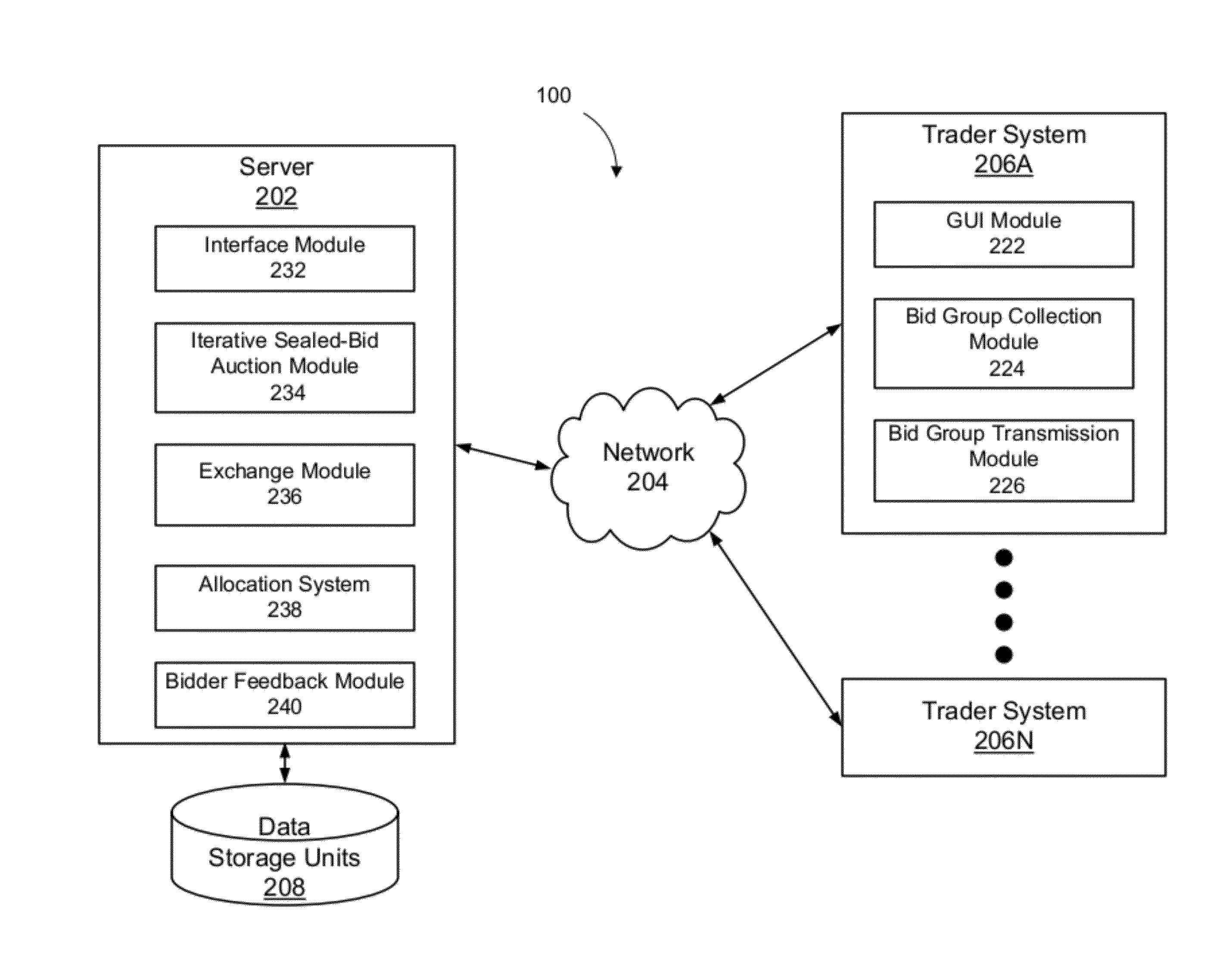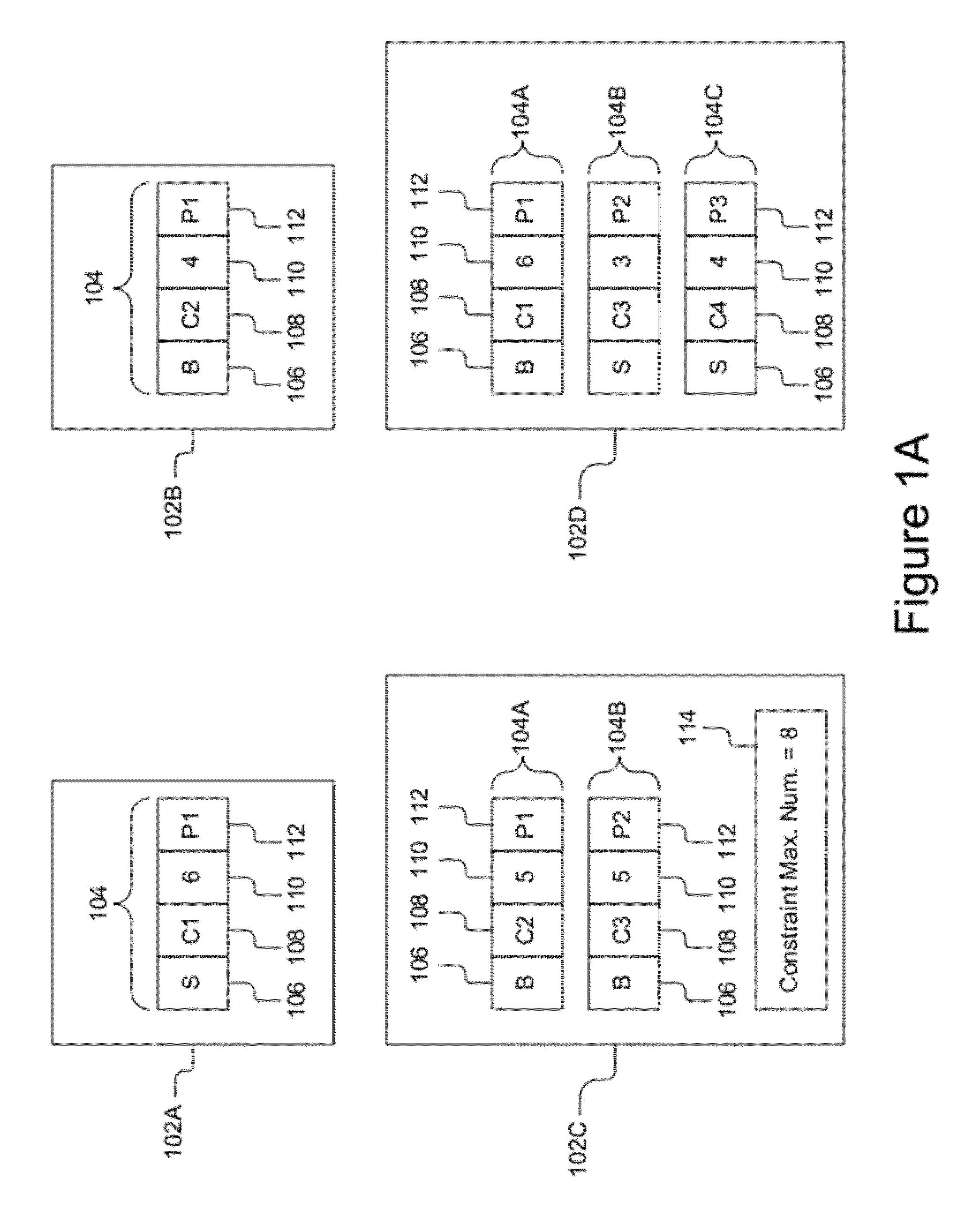Systems and Methods for Implementing Iterated Sealed-Bid Auctions
a technology of sealed-bid auctions and auctions, applied in the field of online systems and methods for the exchange of products, can solve the problems of endemic communication complexity, unremarkable but effective auction design, and inability to transact billions of dollars, so as to improve the price offer, and achieve efficient assignment
- Summary
- Abstract
- Description
- Claims
- Application Information
AI Technical Summary
Benefits of technology
Problems solved by technology
Method used
Image
Examples
third embodiment
[0046]a bid group 102C shows another configuration for a bid group in which there are a plurality of bids 104A, 104B that are subject to a total effective quantity constraint 114. Again, each of the plurality of bids 104A, 104B has the structure described above and includes the first through fourth fields 106, 108, 110 and 112. For example, a first bid 104A of the bid group 102C is a bid to buy five lots of commodity C1 at price P1 and the second in 104B of the bid group 102C is a bid to buy five lots of commodity C3 at price P2. Both of these bids 104A, 104B are subject to constraint 114 that specifies that the total number of units may not exceed eight. In other words, the constraint 114 implements a mutually exclusive such that the maximum number of lots of C2 and C3 is at most eight (8=5+5−2). Those skilled in the art will recognize that while only two bids to buy 104A, 104B are shown in bid group 102C, other configurations of bid groups could apply a mutually exclusive or const...
fourth embodiment
[0047]A fourth embodiment a bid group 102D shows that the bid group 102D can include a plurality of bids 104A, 104B and 104C that implement a swap. In other words, the plurality of bids 104A, 104B and 104C need not be of the same type (all bids to buy or all bids to sell), and in fact, at least one of the bids in a swap bid group must be a bid to sell and a second of the bids must be a bid to buy. Again, each of the plurality of bids 104A, 104B and 104C has the structure described above and includes the first through fourth fields 106, 108, 110 and 112. For example, a first bid 104A of the bid group 102D is a bid to buy six lots of commodity C1 at price P1; the second bid 104B of the bid group 102D is a bid to sell three lots of commodity C3 at price P2; and the third bid 104C of the bid group 102D is a bid to sell four lots of commodity C4 at price P3. While the example bid group 102D only shows a single bid 104A to buy, those skilled in the art will recognize that bid group 102D i...
fifth embodiment
[0048]Referring now to FIG. 1B, a fifth embodiment a bid group 102E shows that the bid group 102E includes a plurality of bids 104A-104N. This embodiment is similar to that of bid group 102A, except that there are a plurality of bids 104A-104N to buy. Each of the plurality of bids 104A-104N has the structure described above and includes the first through fourth fields 106, 108, 110 and 112. While bid group 102E shows the bids as being bids to buy, those skilled in the art will recognize that they could alternatively be bids to sell.
PUM
 Login to View More
Login to View More Abstract
Description
Claims
Application Information
 Login to View More
Login to View More - R&D
- Intellectual Property
- Life Sciences
- Materials
- Tech Scout
- Unparalleled Data Quality
- Higher Quality Content
- 60% Fewer Hallucinations
Browse by: Latest US Patents, China's latest patents, Technical Efficacy Thesaurus, Application Domain, Technology Topic, Popular Technical Reports.
© 2025 PatSnap. All rights reserved.Legal|Privacy policy|Modern Slavery Act Transparency Statement|Sitemap|About US| Contact US: help@patsnap.com



